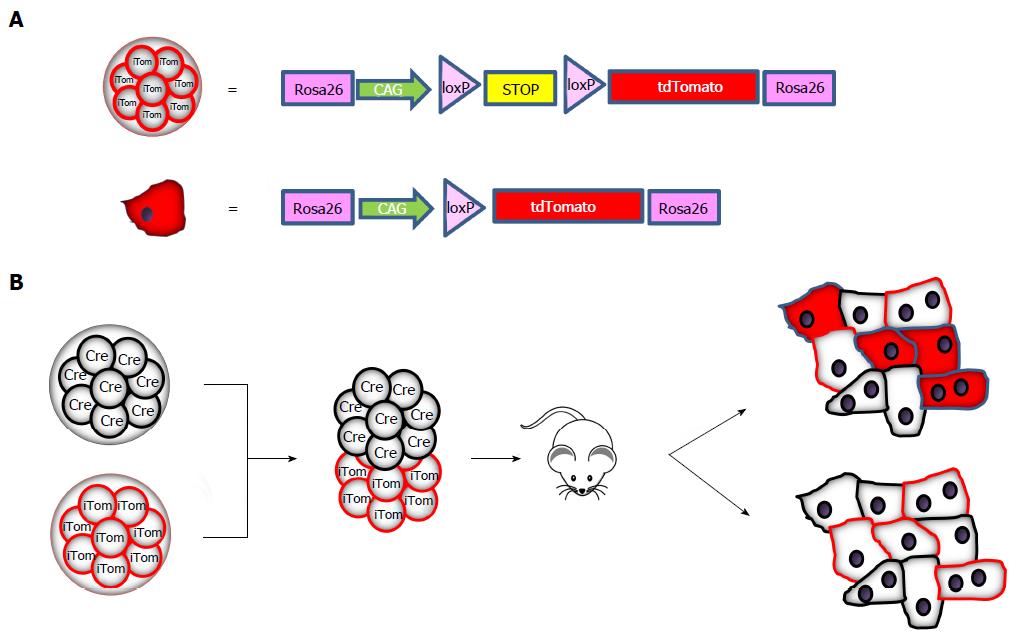Copyright
©The Author(s) 2018.
World J Hepatol. Feb 27, 2018; 10(2): 213-221
Published online Feb 27, 2018. doi: 10.4254/wjh.v10.i2.213
Published online Feb 27, 2018. doi: 10.4254/wjh.v10.i2.213
Figure 1 Schematic representation of the Cre: TdTomato approach here described.
A: Depiction of the transgene carried by the tdTomato mouse (JAX 007905). The transgene is inserted in the Rosa26 locus and contains a Tomato gene (tdTomato) under the control of a constitutive promoter. Between the promoter and the gene there is a stop cassette flanked by two loxP sequences in the same orientation that prevents tdTomato transcription in this configuration. If the stop cassette is removed by exposure to the Cre recombinase, the tdTomato gene becomes expressed and its expression is maintained through the cell life; B: The generation of mouse chimeras by aggregation of one Cre+ morula (Cre, black-circled cells) derived from CMV-Cre mice (JAX 006054) with a tdTomato one (iTom, red-circled cells) is shown. The aggregated morulae are transferred to females and the progeny analyzed at three months of age. tdTomato expression should occur only if a Cre+ cell fuses with a tdTomato one (full red hepatocyte), whereas if no fusion occurs only tdTomato-negative cells are seen.
- Citation: Lizier M, Castelli A, Montagna C, Lucchini F, Vezzoni P, Faggioli F. Cell fusion in the liver, revisited. World J Hepatol 2018; 10(2): 213-221
- URL: https://www.wjgnet.com/1948-5182/full/v10/i2/213.htm
- DOI: https://dx.doi.org/10.4254/wjh.v10.i2.213









